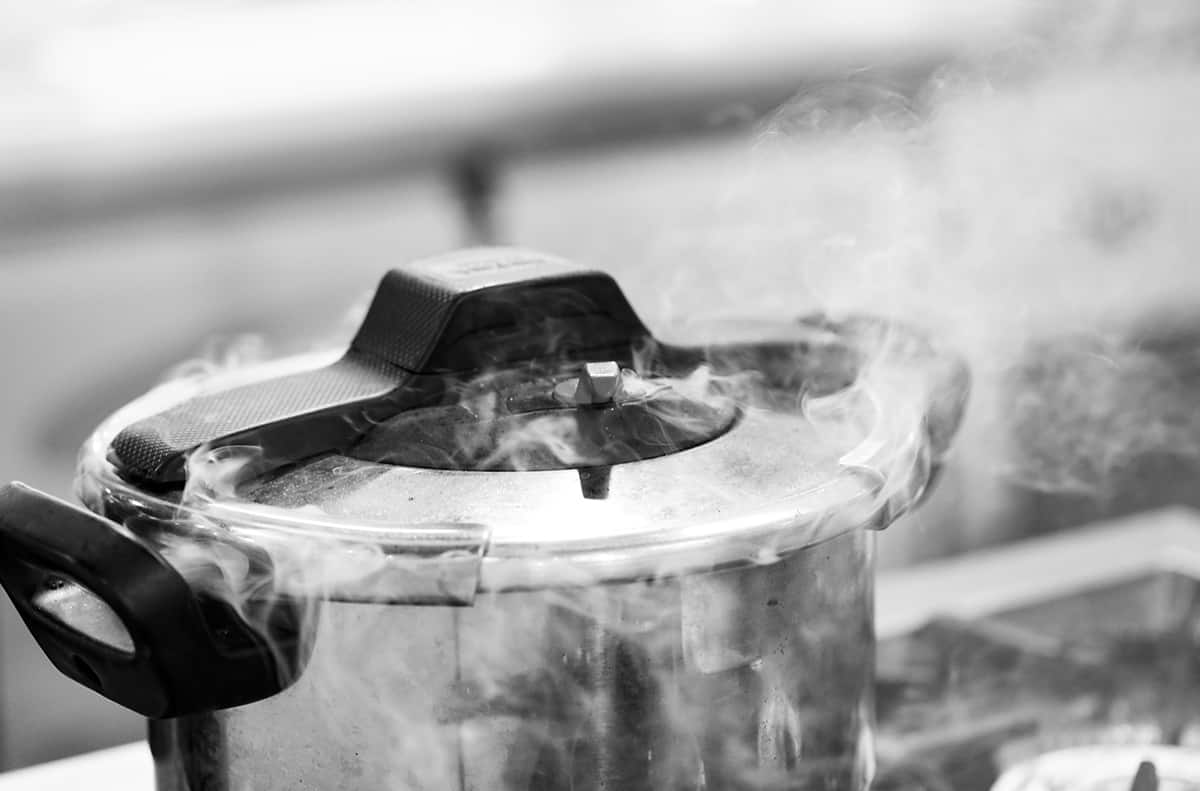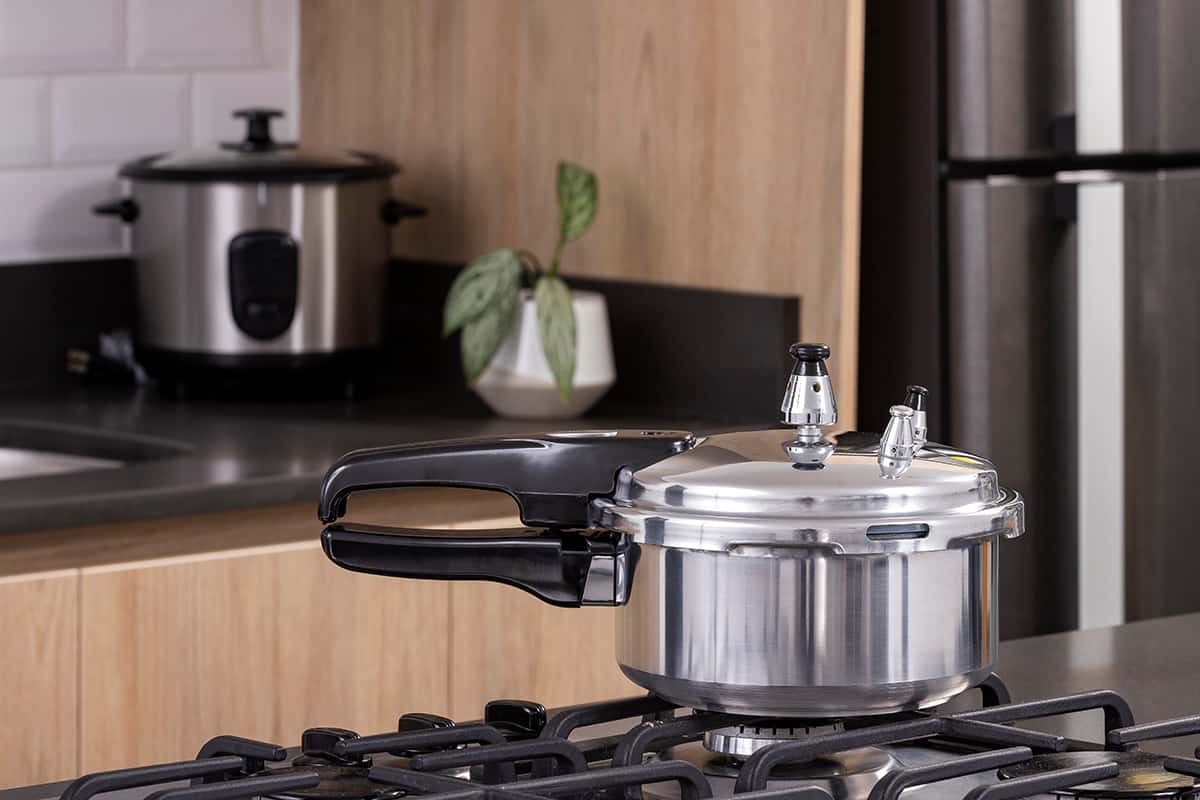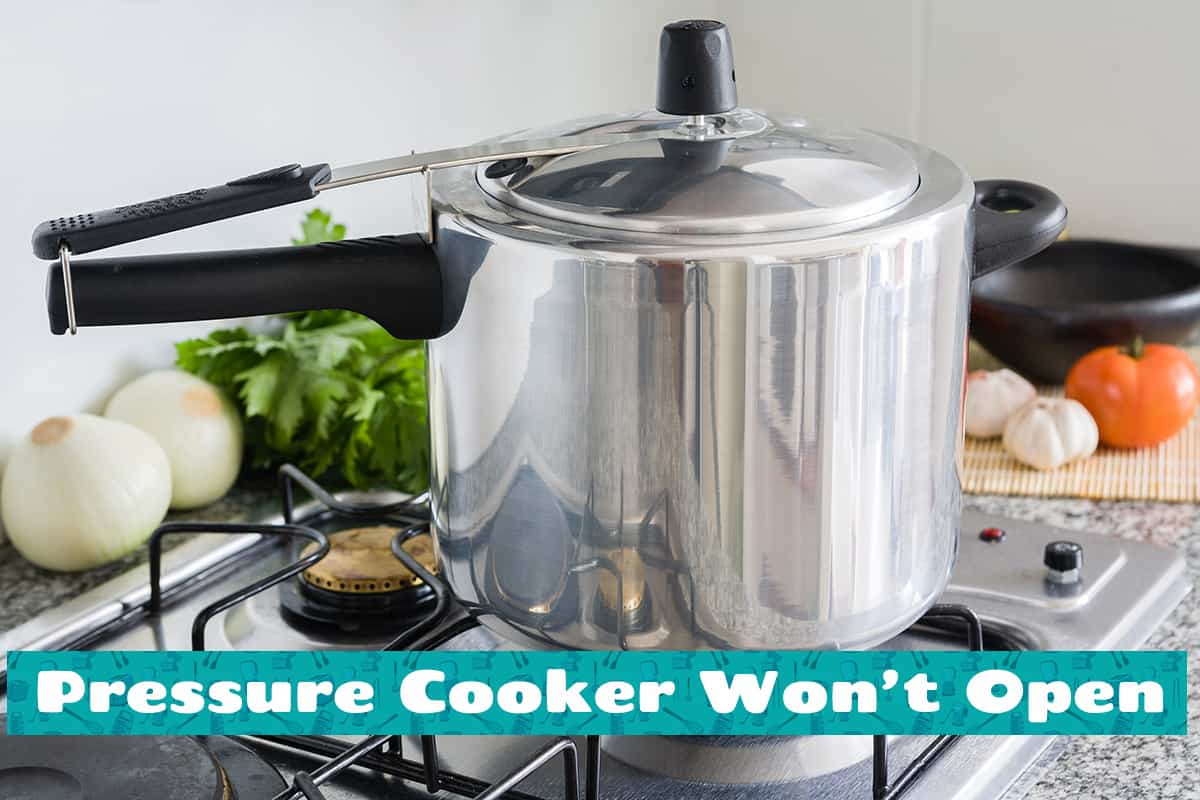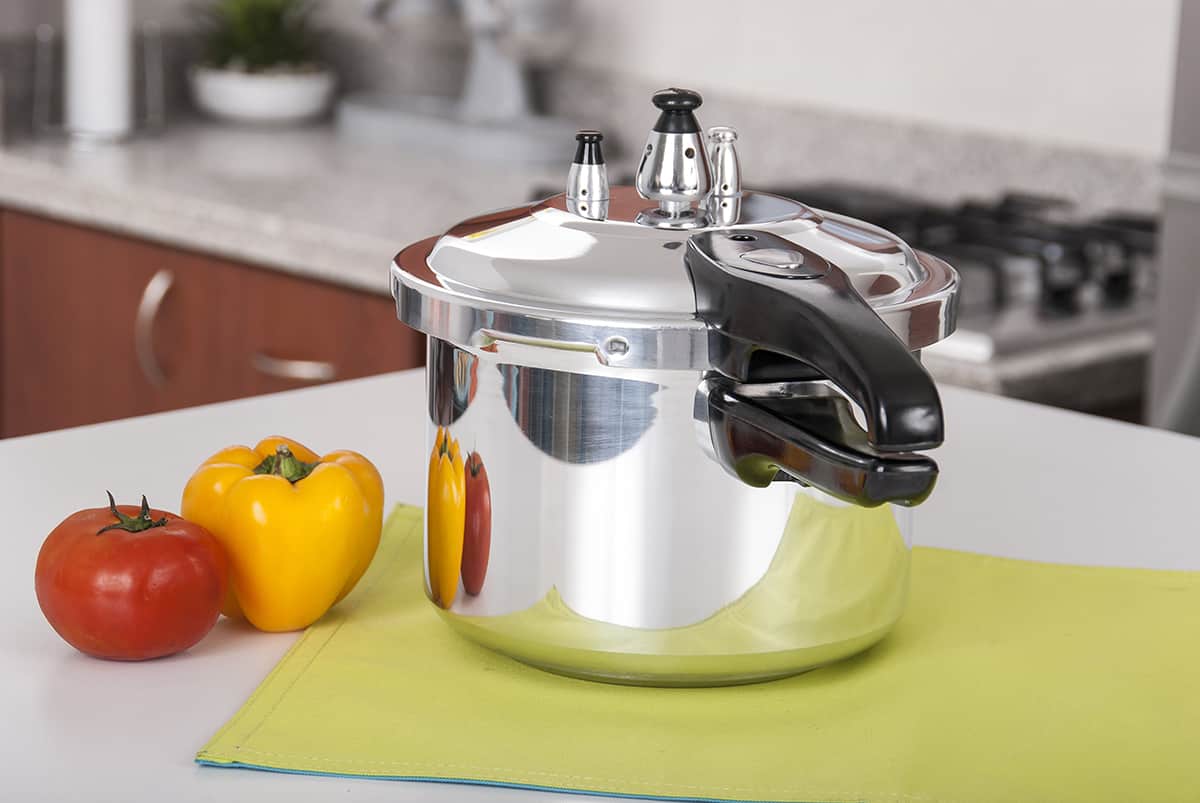Pressure cookers are versatile appliances that use high pressure to cook food quickly, lock in flavors, and retain nutrients. As a beginner, you may feel overwhelmed by the many features and functions of a pressure cooker, but with the right guidance, you’ll be a pressure-cooking pro in no time.
Here’s what you should do when you take your pressure cooker home for the first time:
- Unbox and assemble
- Clean the cooker
- Understand parts and functions
- Learn safety precautions
- Familiarize yourself with terminology
- Perform a water test
This article will guide you through the essential steps of using a pressure cooker for the first time. It will cover the steps mentioned above, as well as how to maintain it.
Understanding Pressure Cooker Parts
A pressure cooker has several key parts that work together to cook food quickly and safely. Let’s go through these parts and their functions:
1. Lid and sealing ring
The lid locks onto the cooker to create an airtight seal. The sealing ring, usually made of rubber, sits inside the lid and ensures a secure fit.
2. Pressure release valve
This valve controls the release of steam. When pressure builds, steam escapes through the valve to maintain a safe cooking environment.
3. Pressure regulator
The regulator controls the cooking pressure. In stovetop cookers, it’s a weight on top of the release valve. In electric cookers, it’s a built-in feature.
4. Cooking pot
This removable pot is where you place your ingredients. It’s typically made of stainless steel or non-stick material.
Setting Up Your Pressure Cooker for the First Time

When using a pressure cooker for the first time, it’s essential to follow some simple steps to ensure you’re ready to cook safely and efficiently. Let’s go through these steps:
1. Unboxing and assembling
First, remove your pressure cooker from its packaging and make sure all the parts are present. Refer to the user manual or guide to identify each component and assemble your cooker correctly.
2. Washing and cleaning
Before using your pressure cooker, wash all removable parts, such as the cooking pot, lid, and sealing ring, with warm soapy water. Rinse and dry them thoroughly. Wipe the exterior of the cooker with a damp cloth.
3. Checking for defects
Inspect your pressure cooker for any defects or damage, such as cracks or dents. Make sure the sealing ring is free from any cuts or tears. If you find any issues, contact the manufacturer or retailer for a replacement.
4. Familiarizing yourself with controls
Take some time to learn the controls of your pressure cooker. For electric models, understand the functions of each button and how to set cooking times and pressure levels. For stovetop cookers, learn how to adjust the heat to achieve the correct pressure.
5. Reading the user manual
Always read the user manual that comes with your pressure cooker. It contains essential safety information and tips for proper use.
6. Preparing for the water test
Before cooking your first meal, perform a water test to ensure your pressure cooker is functioning correctly. Fill the cooking pot with a few cups of water, secure the lid, and set the cooker to high pressure for a short period. Observe the pressure build-up and release to confirm everything is working as it should.
Getting Familiar with Pressure Cooker Terminology
Understanding pressure cooker terms will help you use your cooker confidently. The keywords you should know are as follows:
1. PSI (pounds per square inch)
A unit of pressure measurement. Higher PSI indicates higher pressure, resulting in faster cooking times.
2. Natural Pressure Release (NPR)
A method of releasing pressure where the cooker is removed from heat, and pressure drops gradually. This takes about 10-20 minutes and is suitable for dishes with liquids or foods that need more time to cook.
3. Quick Pressure Release (QPR)
A faster method of releasing pressure by opening the release valve, allowing steam to escape rapidly. Use this for delicate foods like vegetables or fish to prevent overcooking.
Safety Precautions
Using a pressure cooker is safe when you follow some basic precautions. Here are important safety measures to keep in mind:
- Ensure the lid is locked in place and the sealing ring is correctly positioned. This prevents steam from escaping unexpectedly.
- Don’t fill the cooker more than two-thirds full. For foods that expand, like grains or beans, fill only halfway. This ensures proper pressure build-up and prevents blockage of the release valve.
- Before opening the cooker, ensure all pressure is released. Use the natural pressure release (NPR) or quick pressure release (QPR) methods, as recommended in your recipe.
Understanding Cooking Times and Pressure Levels

Knowing the correct cooking times and pressure levels is key to achieving perfectly cooked dishes. Follow these quick guidelines:
- Different foods require different pressure levels. Use high pressure for meats, beans, and grains, and low pressure for delicate foods like vegetables or seafood.
- At higher altitudes, cooking times increase due to lower air pressure. For every 1,000 feet above 2,000 feet elevation, increase cooking time by 5%.
Cleaning and Maintenance
Proper cleaning and maintenance of your pressure cooker are important to ensure it stays in good condition. Follow these steps to keep your pressure cooker in tip-top shape:
- Clean the cooking pot, lid, and sealing ring after each use with warm soapy water.
- Check the sealing ring for wear and tear; replace if necessary.
- Remove food debris from the pressure release valve to avoid blockage.
- Store the cooker with the lid upside down to protect the sealing ring.
- Regularly inspect the cooker for damage or worn parts; replace as needed.
FAQs
1. Is it safe to use a pressure cooker?
Yes, using a pressure cooker is safe when you follow the proper guidelines and safety precautions. Make sure to lock the lid securely, avoid overfilling, and release pressure safely. Modern pressure cookers come with built-in safety features to prevent accidents.
2. Can I use my pressure cooker for canning?
Some pressure cookers can be used for canning. Check the manufacturer’s guidelines to see if your cooker is suitable for canning. For safe canning, you need a pressure canner that maintains consistent pressure and temperature levels.
3. What if my pressure cooker isn’t reaching pressure?
If your pressure cooker isn’t reaching pressure, consider the following:
- Ensure the sealing ring is properly positioned and free of damage.
- Make sure the lid is locked securely.
- Check that there’s enough liquid in the pot, usually a minimum of 1-2 cups.
- Inspect the pressure release valve for blockages or debris.
- If the issue persists, consult your cooker’s user manual or contact the manufacturer for assistance.
4. How do I know when the pressure has been fully released?
There are a few ways to tell if the pressure has been fully released:
- For electric pressure cookers, the pressure indicator will drop, and the lid will unlock automatically when it’s safe to open.
- For stovetop pressure cookers with a weighted pressure regulator, the hissing sound of steam escaping will stop when the pressure is fully released.
- When using the natural pressure release method, wait 10-20 minutes after turning off the heat before attempting to open the cooker.
- Always follow your recipe’s recommended pressure release method to ensure safety.
5. Can I cook frozen food in a pressure cooker?
Yes, you can cook frozen food in a pressure cooker. It’s a convenient method that saves time since you don’t need to thaw the food first. However, cooking times may need to be increased to account for the frozen state. Always ensure your food reaches a safe internal temperature before consuming.






